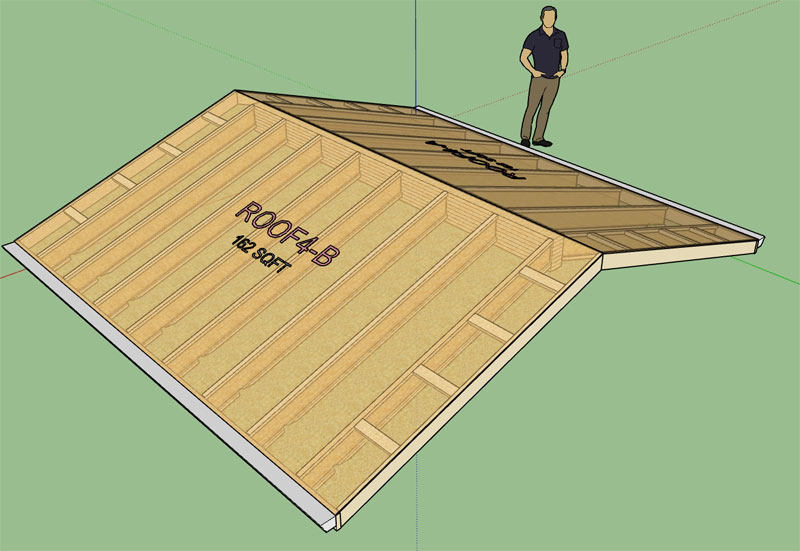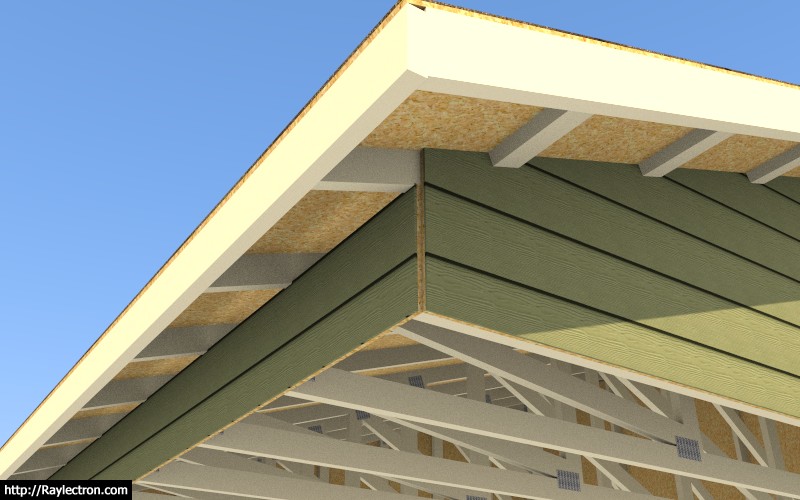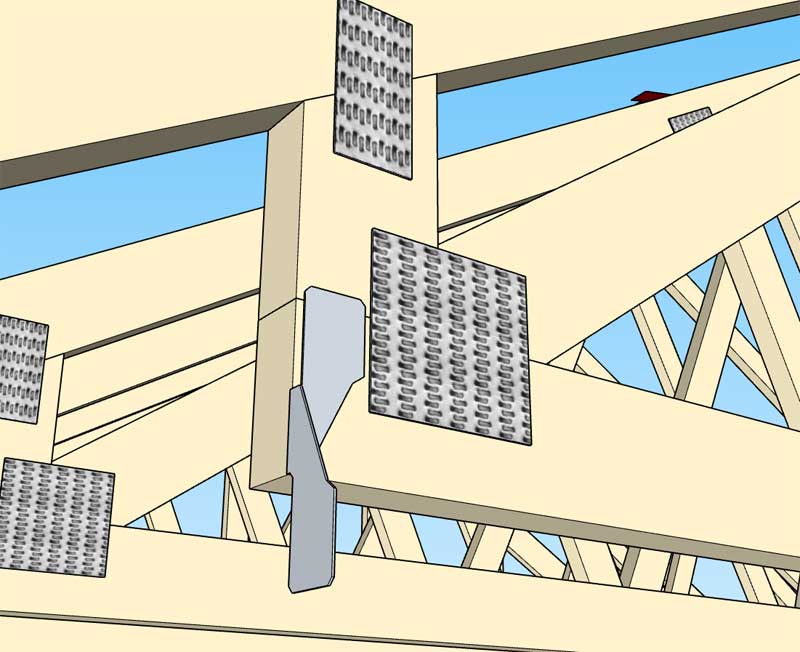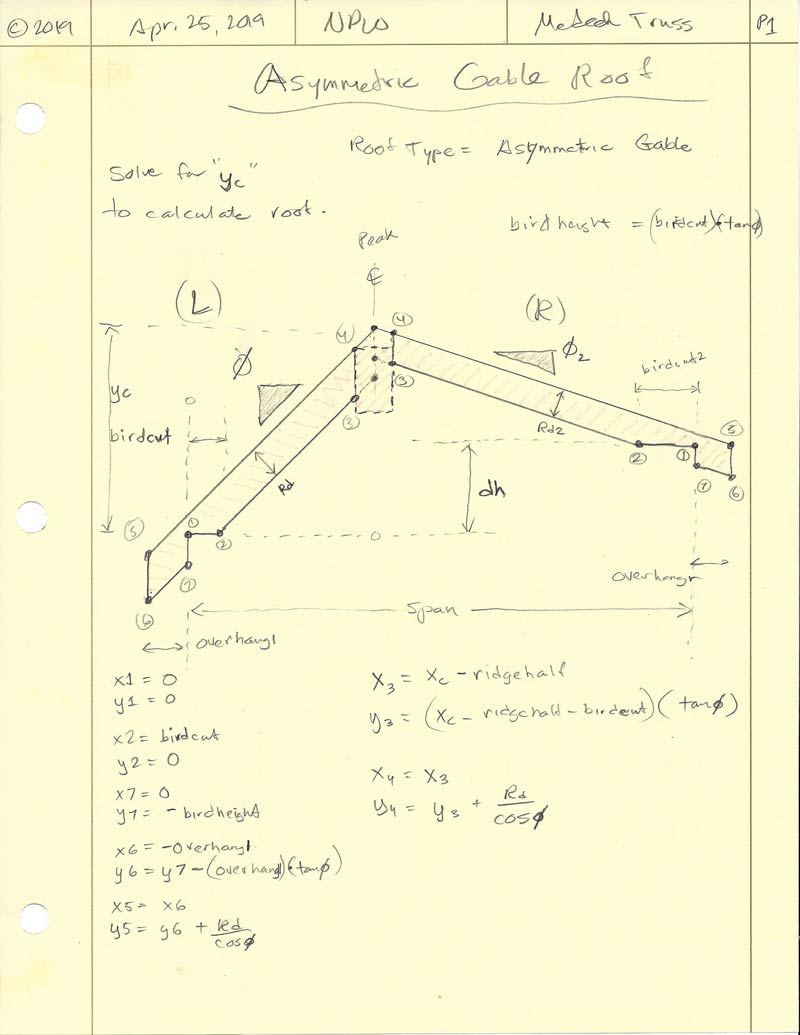3D Truss Models
-
There has been some call for a tool that is similar to the split tool but rather than selecting just one face you would select two faces and a section could be removed from the solid object (imagine two infinite planes cutting a slice out of your solid object). I'm not exactly sure what to call this possible tool (section cut?).
The other question is whether to have the tool break the solid into two separate groups or components like the split tool or just leave the resulting geometry as one group/component? I suppose I could always enable an option that would allow the user to toggle between these to behaviors offering some flexibility to the user.
Similar to the split tool I could allow the user to define the cutting planes but either selecting two faces or selecting six points, or a combination of three points and a face or a face and three points. Lots of permutations here... just makes the code a little more fun.
With regards to the cutting planes, they could be parallel or they might not be, it doesn't really matter. Just as I am doing in the split tool I will need to include logic that checks to see that the cutting planes actually do intersect the solids otherwise no action will be performed. The two cutting planes cannot be perpendicular to each otherwise a valid solution cannot be obtained, or at least that is what I initially thought. I will need to give that possible solution some more thought. If a solution can be obtained there is no reason to discard it. There may be some overlap with the Trim 2 function, but that tool does not have the ability to separate the solid into different groups.
Any thoughts or suggestions with regard to this potential addition to the tools?
Also just a reminder that even though I am including these tools within the Truss plugin they are designed to work with any solid geometry created in SketchUp, it doesn't need to be plugin related geometry.designed to work with any solid geometry created in SketchUp, it doesn't need to be plugin related geometry.
-
I've been thinking about labels for truss and rafter roofs and I would like to add in some sort of labeling system like the Wall plugin.
With a typical gable roof I will have a label on each side of the roof aligned with the roof plane but offset vertically so it does not Z fight with the sheathing or cladding (shingles). The label will be similar to the Wall plugin where the user can customize the prefix (eg Roof1, Truss1, Rafter1 etc...)
Each side will be designated a letter, so Roof1-A and Roof1-B. Hip roofs will have four roof planes so A, B, C and D.
If the framing callout is enabled then beneath the label will show the area for that roof plane (sheathing):

-
Version 2.2.7 - 12.27.2018
- Roof and Floor labels option added to the General tab of the Global Settings.
- Roof and Floor label prefixes can be customized in the General tab of the Global Settings.
- Roof labels enabled for common trusses.
- When framing callouts are enabled the area of each roof plane will be shown below the roof label (currently only common truss assemblies have this feature available).
- Added a customizable color for roof and floor labels within the Material tab of the Global Settings.
- Added additional layers for dimensions, annotations, 2d geometry, building code and engineering.

-
Version 2.2.7b - 12.29.2018
- Enabled roof labels and framing callouts for monopitch truss assemblies.
- Added stats (roof sheathing) for common and monopitch truss roofs which can be analyzed within the Medeek Estimator (Wall Extension) module.
In order to use this new feature you must also have the Wall plugin installed and upgraded to Version 0.9.9v, See Wall plugin thread for further details.
-
Version 2.2.7c - 12.30.2018
- Enabled roof labels and framing callouts for all rafter roof assemblies: Gable, Hip, Dutch Gable, TJI, TJI w/ Glulam, Shed etc...




I've also been thinking about how to best handle holes or cutouts in the roof sheathing and cladding that are not only parametric but can be properly reported by the estimator (ie. net area vs. gross area). I think I have a system worked out, I just need to implement the prototype and test it out.
The cut out or hole tool will have a few options. One of the options will allow the user to specify whether to cut the cladding, sheathing or framing or all of them. If the framing is cut then another option for framing in the opening.
I may also provide another option to provide a skylight to cover an opening or other construction elements (eg. vents, whirlybirds etc...)
-
Another basic piece of information of any roof is the pitch or angle in degrees for the metric side of the house. I'm updating the framing callout for roofs to also include this information:


-
Version 2.2.7d - 01.04.2019
- All roof framing callouts now include the roof pitch or angle in degrees (metric templates).
- Added additional stats: (ridge cap, drip edge) for common and (drip edge) for monopitch truss roofs which can be analyzed within the Medeek Estimator (Wall Extension) module.

The new stats will become available with the next release of the Wall plugin.
-
Version 2.2.8 - 01.06.2019
- License expiration date now appears in the License tab of the Global Settings when plugin is registered.
-
Version 2.2.8b - 01.18.2019
- Fixed a bug in the license and registration module.
I've noticed an issue with some licenses created in 2016. If you purchased a license before Jan. 2017 and the plugin is still showing as "TRIAL" version, even when the serial number is input properly into the License tab of the global settings, please contact me and I will re-issue you a corrected serial number as well as upgrade your expiration date by six months for any inconvenience this may have caused you.
-
Version 2.2.9 - 02.25.2019
- Fixed a bug in the display of the toolbars (Mac and Windows).
- Enabled custom materials for wall sheathing, wall cladding, roof sheathing and roof cladding in the HTML advanced options draw menu for attic trusses. This update also resolved an associated bug in the global settings for attic trusses.
-
Version 2.3.0 - 03.01.2019
- Fixed one bug and a number of minor issues with monopitch trusses.
- Enabled sheathing and cladding at the heel of raised heel common and monopitch trusses.
- Added metal plates for raised heel monopitch trusses: wedge, slider, vertical w/ strut.

If you are using monopitch trusses at all then this is a critical upate. Previously my algorithm for the bottom chord of the monopitch truss was not properly assigning the material and layer when the raised heel option was enabled for this truss type.
Strangely that issue has been in existence since 2016 and no one seems to have noticed or at least notified me of it. While working on the cladding of raised heel variants the issue jumped out at me and now it is finally resolved.
The thing about this plugin is that there are so many design permutations possible that it is almost impossible for me to investigate every single one and check for these type of minor issues. That is why I rely heavily upon user feedback to help put out some of these fires.
-
Related links to the Truss Plugin:
Main Web Page:
Changlog:
Medeek Design Inc. - Medeek Truss Plugin Changelog
Medeek Design Inc. - Medeek Truss Plugin Changelog
(design.medeek.com)
Registered User Map:
Vendor Products:
Medeek Design Inc. - Medeek Truss Plugin Vendors
Medeek Design Inc. - Medeek Truss Plugin Vendors
(design.medeek.com)
Truss Calculator (Common Fink Truss Only):
Snow, Seismic and Winds Loads and other resources:
-
Version 2.3.1 - 03.15.2019
- Fixed a bug with the wall cladding material parameter in the global settings.
- Updated toolbar icons to be compatible with 4k (UHD) resolution monitors.
-
Version 2.3.2 - 04.15.2019
- Enabled the "Edit Truss Assembly" function for all scissor trusses (imperial and metric units).
-
Version 2.3.3 - 04.17.2019
- Enabled the "Edit Truss Assembly" function for attic trusses (imperial units only).
- Improved formatting of all HTML edit menus: Common, Monopitch, Scissor, Attic.

-
When I originally enable hurricane (uplift) ties for the trusses I failed to check to see how things looked with a raised heel when the H2.5A (simpson) tie was used.
In this particular case the tie needs to be flipped around so that it is facing towards the interior rather than the exterior. I've made the correction and added the logic into the code. I will release the fix with the next version:

-
Version 2.3.4 - 04.24.2019
- Enabled the "Edit Roof Assembly" function for gable and hip rafter roofs (imperial and metric units).
- Corrected an issue with H2.5A hurricane ties when utilized with raised heel trusses.

This is a fairly substantial upgrade for the plugin and now gives the user the ability to edit stick framed roofs. Previously only certain truss roofs could be edited.
I still need to enable editing for the other rafter roof types (shed roofs, I-Joist, rafter roofs with glulam beams etc...), but at least I've now got the two most common roof types with full parametrics enabled.
-
This brings me back to some topics I was exploring last year at about this time regarding asymmetric rafter roofs. I will set aside the hip roof for a minute and look at the simple gable roof in continuation of this discussion.
Each side of the roof may have a different pitch. Additionally the top plate height may differ as well as the birdcut. Things tend to get a little complicated when the symmetry is broken.
Basically one can boil it down to a symmetric or asymmetric gable roof. The asymmetric variant will have the following additional parameters:
Roof Type: Symmetric Gable, Asymmetric Gable
Pitch2 - Roof pitch of right side roof
Birdcut2 - Birdcut length of right side of roof
Delta Height - Difference in height between left and right bearing walls (left side is reference)One could even go so far as to define a different rafter depth for the opposite side, as its length may be more or less than its opposite side:
Rafter Depth 2 - Rafter depth on right side of roof.
-
With the asymmetric variant the secondary pitch and bearing height cause the location of roof peak to be off center. In order to draw the roof one must first solve for the location of the roof peak (x direction). The solution is given by:


I won't really know if the math is correct until I drop it into the ruby code and test it.
I will also need to check for null solutions, where certain combinations of pitches and delta h create impossible geometry.
I kind of miss the rigor of the math often required with the development of the truss plugin. Asymmetric hip roofs are going to be even more math intensive.
I'm not exactly sure on what to do with the ridge board. I can either bevel it or drop it to the same height as the lower side rafters.
-
Version 2.3.5 - 04.28.2019
- Fixed the show_modal bug for macOS in the Materials tab of the global settings.
Advertisement









